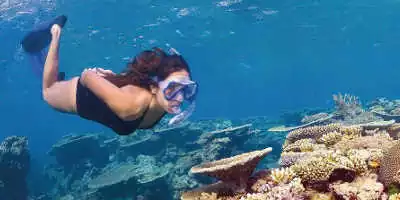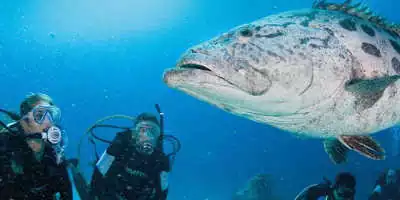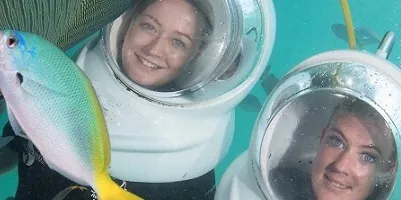
Basic Scuba Diving Rules in the Great Barrier Reef
Written by: Cameron Ward
Published: 10/02/2014
Reading time: 3 mins
Drift down to explore one of the seven wonders of the natural world at the Great Barrier Reef. This majestic marine park showcases some of the best diving sites in the world with its rainbow coral gardens, striped barracuda, unicorn fish, reef sharks and mantra.
The warm inviting waters provide crystal clear vision and nothing can compare to spending the day discovering what lies beneath. You can sail out to the depths, dive for hours and then soak up the pleasures of a cold beer on the sweeping sands surrounded by paradise.
-
Tailored Dives to Suit
Whether you have barely ducked your head before or you are a seasoned underwater adventurer seeking new challenges, the Great Barrier Reef has the dive spot for every level. From beginner courses in the corals to daring wall dives, sunken wrecks and even midnight dives beneath the moon, scuba diving on the reef is a smorgasbord of sheer delight.
-
Always Book a Tour
The ocean is a wild place brimming over with beauty but also home to many dangers. It is essential to stay safe when diving not only to protect yourself but also to protect the delicate eco system of Australia’s national treasure. It is always recommended to book a scuba diving tour of the Great Barrier Reef as the expert guides will know the best spots and how to reduce the risks of encountering danger beneath the waves.
-
Select the Best Spots
There are many world famous dive sites along the coast of Queensland and around the wonderful Whitsundays and Cairns. The Ribbon Reefs are overflowing with surgeonfish, lush plateaus, coral grottos and slithering sea snakes. The wreck of the SS Yongala is home to many shark species, eagle rays and hundreds of exotic brightly painted schools of fish and the Osprey Reef is a mecca for coral exploration and manta rays.
-
Staying Safe in the Waters
The golden rule of diving in the Great Barrier Reef is to look but don’t touch. Coral can be incredibly fragile and even the slightest touch can cause damage. Coral lives and breathes and some come with stingers and sharp spines which can also hurt you. Brush up on your knowledge of the creatures that can cause you damage especially when it comes to the dreaded box jellyfish whose sting can be lethal. Sea snakes can also be dangerous as can sting rays. Large fish and sharks should never be fed as this encourages them to come close to divers which can lead to heightened risks of being bitten. Always follow the instructions of your dive master and don’t venture out alone on the Great Barrier Reef.







